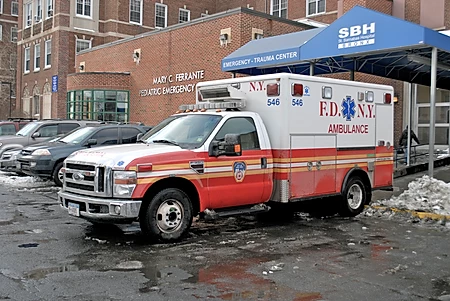On April 2nd, 2020, the New York Post once again attempted to stir hysteria with a doom-and-gloom article about NYC paramedics having been given orders by the FDNY to no longer transport patients who go into cardiac arrest outside of a hospital.
As a paramedic who has worked in five states and in NYC, let me burst that little bubble:
Paramedics should almost never transport patients who have remained in cardiac arrest and do not have a return of spontaneous circulation. In fact, many systems in the United States and abroad stopped transporting these patients years ago. To that effect, when I worked in NYC as a paramedic for more than three years and across four of the five boroughs – both in the 911 system and in private transfers – I probably left more than 75% of my cardiac arrest patients on the scene after a full work-up and eventually issuing a pronouncement of death.
Let’s clear up some misconceptions presented by the New York Post article or otherwise:
1) Paramedics in the field do EXACTLY the same thing for a patient in cardiac arrest as a full team of physicians and nurses do in the hospital, with rare exceptions for unusual circumstances. This includes CPR, defibrillation, EKG rhythm interpretation, placement of an invasive airway and artificial ventilation (manually, or via ventilator), IV access, and all the same medications. Everyone uses the same exact guideline issued by the American Heart Association. When a paramedic, an EMT, and a handful of firefighters do CPR on your grandmother in your living room- assuming they’re competent at their jobs – you are getting identical treatment to what you would receive in any hospital emergency room in nearly all cases.
2) For at least the last ten years (I cannot personally speak to anything before that), NYC always allowed paramedics to pronounce a patient dead on scene after a full cardiac arrest work-up and a quick phone call with a medical control physician. The majority of cardiac arrests responded to within NYC always have been – since the word “Corona” only brought watery beer to mind – pronounced dead on scene and left with law enforcement to await the coroner. This continues to be the standard of care, and is so because there is no evidence suggesting transporting patients who remain in cardiac arrest has any benefit. On the contrary, transporting patients in active cardiac arrest likely results in worse outcomes due to inevitable breaks in CPR, potential dislodging of airways during large movements (such as carrying a patient down a flight of stairs), attempting to juggle the logistics of transport while keeping an eye on time to ensure proper medication administration intervals, and numerous other moving parts that interfere with a cardiac arrest being handled in a calm, calculated, precise manner. Patients who are pronounced dead on scene for valid reasons by a paramedic would not fare any better in a hospital.

It is sad to me, both as a paramedic and an American, to see the endless stream of misleading hysteria promulgated by one media outlet after the next, the world over. With this edict from the FDNY, the reality is minimal change: they’re simply suggesting that if you were nervous about pronouncing death for whatever reason and wanted to transport your patient in cardiac arrest, don’t. This FDNY EMS order did not change anything at all from the standard practice used around the globe for years, but that didn’t stop the New York Post from howling as if EMS professionals are now just signing a bunch of death warrants without cause.
I think perhaps the New York Post, and every other media outlet, would benefit from making even a single phone call in researching their articles instead of just vomiting all over a keyboard. This paramedic and writer is a bit tired of having to constantly correct their ignorance and of being maligned as a professional by their laziness.
* There ARE exceptions, such as patients who are candidates for ECMO and a hospital with such a capability, a patient with a suspected massive pulmonary embolism if there’s a short transport time and the potential for tPA administration at the receiving hospital, and a few other situations. These are not common situations.
This article does not necessarily reflect the opinions of The Liberty Block or any of its members. We welcome all forms of serious feedback and debate.


